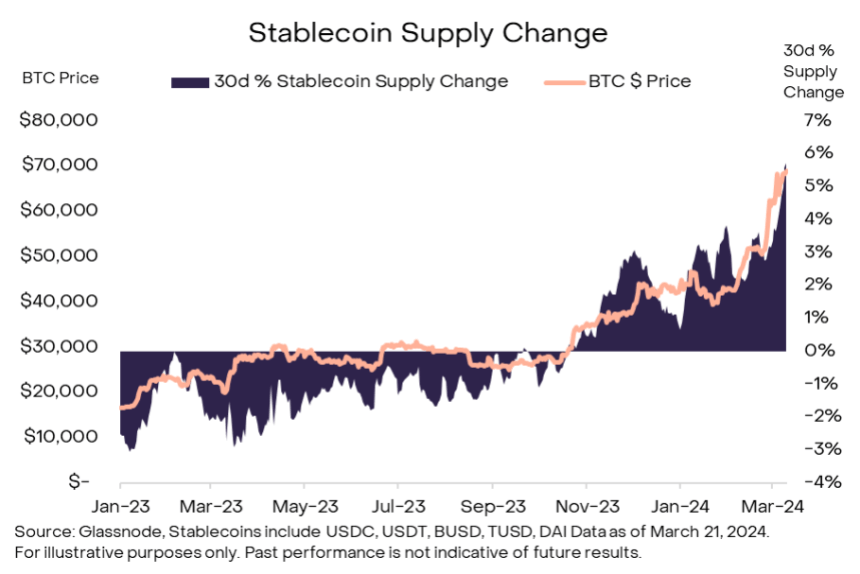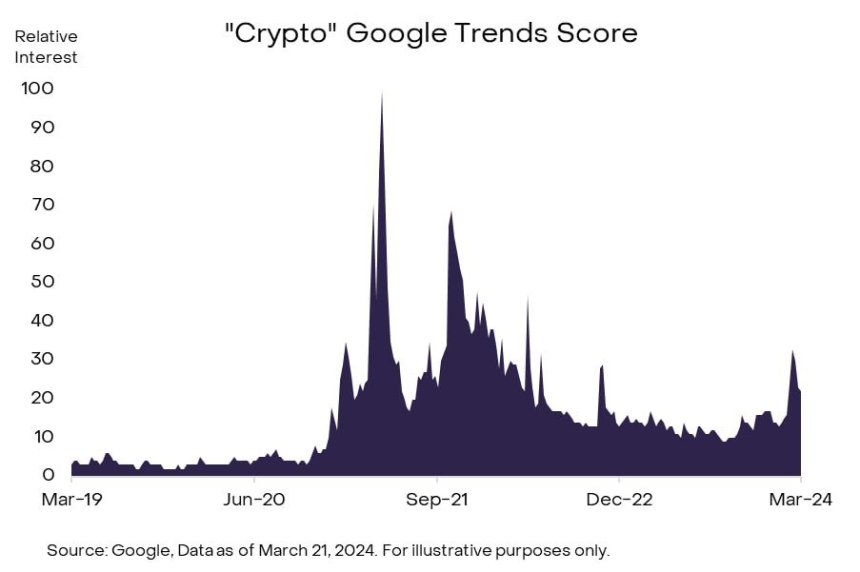The cryptocurrency market has seen a major boom after a prolonged bear market and intense crypto winter caused by the collapse Crypto exchanges And companies during 2022 and part of 2023.
It is worth noting that Bitcoin and other major cryptocurrencies have seen significant price increases, accompanied by renewed interest from investors Institutional investors Enter the market through recently approved exchange-traded funds (ETFs).
Adding to the positive outlook for the industry, asset manager and Bitcoin ETF issuer, Grayscale, believes that the current market situation indicates that the industry is in the “intermediate” stages of a cryptocurrency bull run.
Grayscale recently released a comprehensive report detailing key findings and insights into what lies ahead. closer analysis Market expert Miles Deutscher's report highlights the factors that contribute to this assessment.
On-chain metrics and institutional demand
The Grayscale report begins by highlighting several key signals that indicate that the market is currently in the middle of an upward wave. This includes the price of Bitcoin surpassing its all-time high before the halving event, the total cryptocurrency market capitalization reaching its previous peak, and growing interest from traditional finance (TradFi) towards memecoins.
To understand how long this rally might last, Grayscale emphasizes two specific price drivers: spot inflows of Bitcoin ETFs and strong on-chain fundamentals.
Grayscale notes that nearly $12 billion has flowed into Bitcoin ETFs in just three months, indicating a significant “pent up.” Retail demand. Furthermore, ETF inflows have consistently outpaced Bitcoin issuances, creating upward pressure on prices due to an imbalance between supply and demand.
Grayscale's research focuses on three important on-chain metrics: stablecoin inflows, decentralized finance (DeFi), total value locked (TVL), and BTC outflows from exchanges.
According to Deutscher, the increase in the supply of stablecoins on centralized exchanges (CEXs) and decentralized exchanges (DEXs) by about 6% between February and March indicates enhanced liquidity, making more capital readily available. commerce.

Furthermore, to the analyst, the doubling of the total value locked in DeFi since 2023 represents increased user engagement, increased liquidity, and improved user experience within the DeFi ecosystem.
The outflows from exchanges, which currently represent around 12% of Bitcoin's circulating supply (the lowest in five years), indicate investors' increasing confidence in the value of Bitcoin and a preference for holding rather than selling.
Based on these catalysts, Grayscale asserts that the market is in the “mid-stage” of an upward trajectory, likening it to the “fifth round” in baseball.
Promising forecasts for the crypto industry
Several key metrics support Grayscale's analysis, including the net unrealized profit/loss (NUPL) ratio, which suggests that investors who bought BTC at low prices continued to hold out despite it. Rising prices.
According to Deutscher, the Market Value Realized (MVRV) Z-Score, which currently stands at 3, indicates that there is still room for growth in this cycle. Additionally, the ColinTalksCrypto Bitcoin Bull Run Index (CBBI), which integrates multiple ratios, is currently at 79/100, indicating that the market is approaching historical cycle highs with some upward momentum remaining.
Furthermore, retail interest has not yet fully returned this cycle, as evidenced by lower YouTube subscription rates for cryptocurrencies and lower interest on Google Trends for “crypto” compared to the previous cycle.

Ultimately, Grayscale maintains a “cautiously optimistic” stance regarding the future of this bull cycle, given the promising signals and analysis highlighted in their report.
Featured image from Shutterstock, chart from TradingView.com

